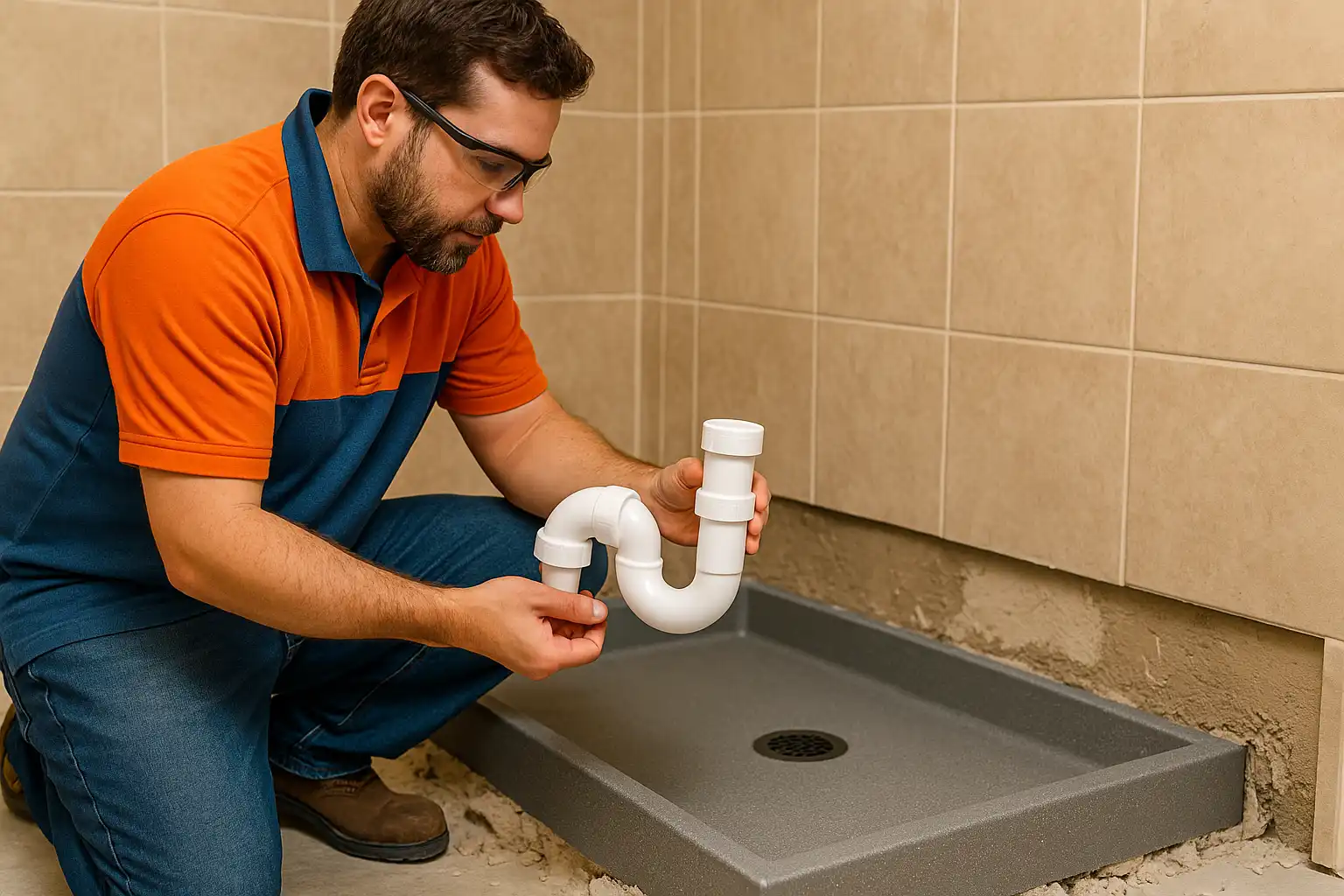Jul 27, 2025
Why Drain Size Matters in Tub-to-Shower Conversions

Converting a tub into a walk-in shower is one of the most popular bathroom remodel upgrades—but there’s a hidden detail many homeowners (and even some contractors) overlook: the drain size.
If it’s wrong, your beautiful new shower can quickly become a nightmare with standing water and poor drainage.
As shared in the EZ Bath Podcast, we’ve seen this problem countless times.
“They left the drain one and a half inches when it needs to be two inches. No wonder the thing wasn’t draining properly.”
Why Drain Size Is Different for Showers vs. Tubs
Most tubs are built with 1.5-inch drains, which work fine for a tub since water drains slower.
But showers have higher water flow and need a 2-inch drain to:
✅ Handle more water volume from rain heads & handheld sprayers
✅ Prevent pooling and keep the shower floor dry
✅ Meet code requirements in most areas
✅ Avoid future clogging issues
If a contractor skips this step, you’ll end up with slow drainage and potential water damage.
A Real Example From the Field
At EZ Bath, we were called to fix a tub-to-shower conversion that was already remodeled by a general contractor.
The homeowner complained:
- Water wasn’t draining properly
- The shower floor always felt wet
- There was a musty smell from trapped water
When we tore it out, we found the original 1.5-inch tub drain left in place—a critical mistake.
“We go in, tear it out, and see it right there—still the old tub drain. It needs to be two inches, and it wasn’t. That’s why it failed.”
✅ How EZ Bath Does It Right
When we do a tub-to-shower conversion in Houston, we:
✔ Properly upgrade the drain to 2 inches as required
✔ Ensure proper slope on the shower pan for fast drainage
✔ Use quality waterproofing systems to prevent leaks (e.g., Kerdi waterproofing)
✔ Follow all plumbing codes to keep your remodel safe & long-lasting
These small details are what separate a quality remodel from a cheap one that fails.
Why Homeowners Should Care About This
You might think, “It’s just a drain—why does it matter?”
But here’s what happens if it’s wrong:
- Standing water leads to mold & mildew
- Slow drainage makes the shower feel unclean
- Over time, water damage can spread under tile or solid surfaces
- Fixing it later means tearing out the whole shower
It’s a classic case of doing it right the first time saves thousands later.
Memorable Quotes from the EZ Bath Podcast
“A lot of people don’t realize what a necessity that is when you’re converting a tub to a shower.”
“We’ve seen jobs done by general contractors, and they’re failing because the drain wasn’t upgraded.”
The Takeaway: Details Matter in Shower Conversions
A tub-to-shower conversion isn’t just swapping fixtures—it’s a plumbing upgrade that requires knowledge and precision.
When done right, you get:
✅ Fast, clean drainage
✅ A code-compliant remodel
✅ Peace of mind knowing it’ll last for years
✨ Remodel the Right Way With EZ Bath
Don’t risk drainage problems with a cheap remodel. EZ Bath specializes in tub-to-shower conversions done to the highest standards—right here in Houston. See more in our before-and-after gallery or start with a trusted local bathroom remodeling company.
See real conversions: @EZBathRemodel on Instagram
Learn more: EZBath.com
FAQ
Q: Do all tub-to-shower conversions require a 2-inch drain?
A: Yes—showers have higher flow rates and generally require a 2-inch drain to meet code and prevent pooling.
Q: Can I keep my 1.5-inch tub drain?
A: Keeping a 1.5-inch drain often leads to slow drainage, standing water, and potential water damage. We recommend upgrading during the remodel.
Q: Will you need to cut my slab to upgrade the drain?
A: Sometimes. It depends on existing drain location and height. We evaluate first and only cut when necessary to meet code and ensure long-term performance.
Q: What else affects drainage besides drain size?
A: Proper pan slope, waterproofing, and venting all matter. We build these into our shower remodels.
Q: How much more does the upgrade typically cost?
A: It varies by layout. Upgrading during a remodel is far cheaper than tearing out a finished shower later to fix drainage problems.